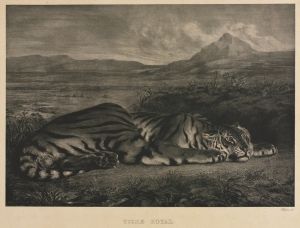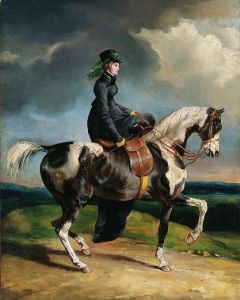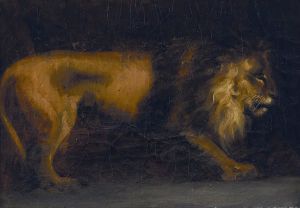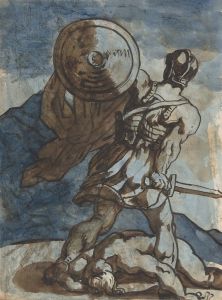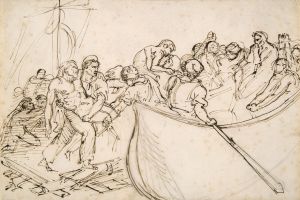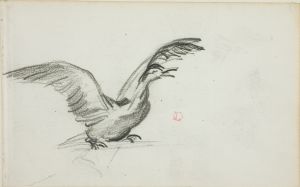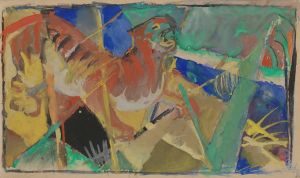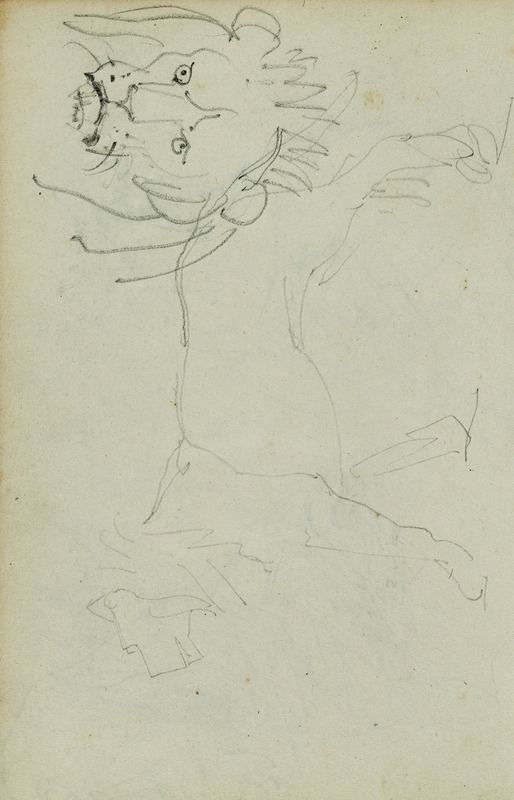
Lion walking, face of lion
A hand-painted replica of Théodore Géricault’s masterpiece Lion walking, face of lion, meticulously crafted by professional artists to capture the true essence of the original. Each piece is created with museum-quality canvas and rare mineral pigments, carefully painted by experienced artists with delicate brushstrokes and rich, layered colors to perfectly recreate the texture of the original artwork. Unlike machine-printed reproductions, this hand-painted version brings the painting to life, infused with the artist’s emotions and skill in every stroke. Whether for personal collection or home decoration, it instantly elevates the artistic atmosphere of any space.
"Lion walking, face of lion" is a painting by the renowned French artist Théodore Géricault. Géricault, born on September 26, 1791, and passing away on January 26, 1824, was a prominent figure in the Romantic movement. He is best known for his dynamic compositions and his ability to capture intense emotion and movement in his works.
The painting "Lion walking, face of lion" is a testament to Géricault's fascination with animals, particularly horses and lions, which he often depicted in his art. This piece showcases his skill in rendering the powerful and majestic presence of a lion, a subject that was relatively common in the Romantic era due to its symbolic associations with strength and nobility.
In "Lion walking, face of lion," Géricault captures the essence of the lion through meticulous attention to detail and a keen observation of the animal's anatomy and movement. The painting likely features a lion in mid-stride, emphasizing the fluidity and grace of its motion. The face of the lion, as suggested by the title, is probably rendered with particular focus, highlighting the animal's fierce and regal expression.
Géricault's interest in depicting animals was partly influenced by his studies of anatomy and his visits to menageries and zoos, where he could observe these creatures up close. His ability to convey the physicality and spirit of animals was also informed by his broader artistic training and his exposure to the works of other great artists of his time.
The painting is an example of Géricault's broader oeuvre, which often explored themes of power, struggle, and the sublime. His works frequently depicted dramatic and intense scenes, whether they involved human subjects, as in his most famous painting "The Raft of the Medusa," or animals, as in "Lion walking, face of lion."
While specific details about the provenance and current location of "Lion walking, face of lion" are not readily available, it is clear that the painting fits within the broader context of Géricault's artistic legacy. His works are celebrated for their dynamic compositions, emotional intensity, and technical mastery, and they continue to be studied and admired by art historians and enthusiasts alike.
In summary, "Lion walking, face of lion" by Théodore Géricault is a notable example of the artist's skill in depicting animals and his ability to convey their power and majesty. The painting reflects Géricault's broader interests and contributions to the Romantic movement, and it remains an important part of his artistic legacy.







